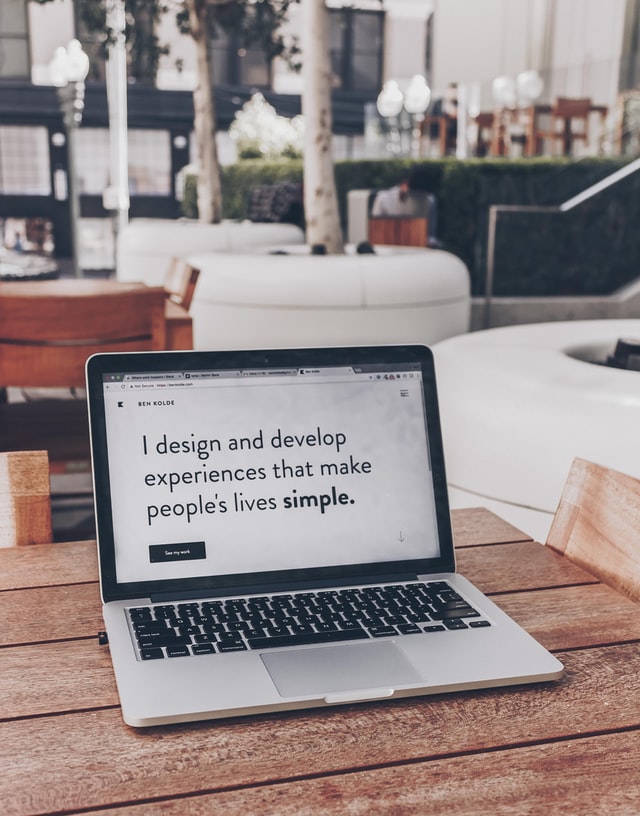The “website” is a common tool used by many businesses. But why? Too often, developing a website is done because “that’s what businesses do” and as such, it becomes a role exercise that inevitably yields little or no productive results. Otherwise known as “the website that doesn’t work”
What you’re about to discover is a completely new version of a website – the website that always works. It always works because it’s a website that starts with your passion, your vision. And rather than denying the impact of change on the development process, it recognizes that change will be your constant companion.
The website that always works begins with a different set of assumptions than does the “traditional” website. Your attitude and relationship to the website will be the key factor that will make it a success.
The “Traditional” website versus the website that works.
A website is a website, right? It’s an online office or marketplace that’s intended to help promote your business or make a success of the business you’re already operating. But why is it that websites almost never come to life? Why do almost all of them, once developed, sit on a server somewhere while the business or product they are set out to promote never really benefits from the investment of building them in the first place?
A traditional website is head-centered; it’s an exercise in what business owners think should do. Developing a traditional website is usually precipitated by two thoughts: either (1) we’d better develop a website because “that’s what business does,” or (2) we need a website if we want our product to reach a larger market.
A traditional website is static. The expectation behind its development is that the website will be “decided” and then implemented. Case closed. There’s usually no room for change on the website.
These first two characteristics of a traditional website are quite intentional. That’s the way websites are done. Thoughtful, analytic, complete, decisive. All the hallmarks of a supposedly “smart” website. And ironically enough, they’re precisely the reasons that result in the third characteristic of the traditional website, that is, a traditional website doesn’t work. It’s the one that ends up on a server, with no visitors, no conversions, only to emerge sometimes in the future with the “whatever happened to…” or “do you remember when we developed…” remarks.
Traditional, head-centered, static websites don’t work. Can you see why they don’t? A website that starts in the head, with logic and reason and thoughts, lacks passion and excitement and purpose. And a website that starts with the assumption that it’s been able to capture and account for all the relevant changes that will happen in the future is obsolete before it is ever hosted. Why would anyone feel a sense of commitment or pride around a website like that! The bottom line is that a traditional website simply won’t give you the results you want or need – it won’t work if nobody’s committed to working it.
The website that works looks a lot like the traditional website. You could put them side by side and not notice any difference. But their appearance is where the similarity ends.
The website that always works does work, and can only work, because it starts from a completely different place, with a different set of assumptions. It starts from a heart-centered development approach, which means it starts with the experiencing of the feelings you’ll have, and your people will have, and your visitors will have when your website is accomplished. When you start by defining the true end result, how you’ll feel, then all the logic and analysis and numbers will really mean something.
The website that always works also assumes, and rightly so, that at the time you’re developing the website, you can’t possibly predict all the changes that will occur. So this website not only tolerates change but relies on your building in change as a key factor that will keep you on the best course. With a clear vision and a website that adjusts its strategies to account for the world as it really is, the work of your business can be best positioned to achieve great results.
The real difference between a website that always works and the traditional website is in how you think and feel about the website – it’s your attitude and your relationship to the website that will make all the difference.
Here are some “productive points of view” about developing your website that will make it a truly worthwhile experience.
- Start with what’s important to you. A mediocre website that you (and others) feel passionately about will serve you better than a technically superior website that you don’t feel strongly about.
- Create a website wireframe that accommodates change. Don’t think of your website as a rigid “final product” with every detail pinned down. Welcome opportunities to add to or revise any part of your wireframe, or eliminate parts of it, when the talent and judgement of your visitors and your own inclination tell you it’s the right thing to do.
- Treat your website as a living application. Make a conscious decision to review your website periodically, evaluate it, and revise it. Stay flexible and open to change. Don’t let your pride or inertia get in the way of reworking the website and moving forward.
- Be clear about what you want to achieve. You need to be clear about what you want the website to do for your business – what you want your business to achieve through your website. You need to be clear about how you’ll use your website to achieve that. Your website should be a “call to action” for your prospective clients and customers.
- Make it robust and flexible. What would a robust and flexible website look like? It would be easy to use and navigate. It would be “attractive” to its visitors. It would adapt easily to change. It would have a clear purpose and be appropriate for the result it’s intended to produce. It would have a clear call-to-action and follow-up mechanism. And it would have “energy” and reflect the passion you feel for your business.
Can you see that a website that always works is not just a website? It’s a “catalytic converter” that takes the ingredients you put into it and intensifies them. If you put passion, excitement, and commitment into your website, it’ll come back out, and become magnified as the website travels throughout the world. You, your people, and your business deserve to have a meaningful, honest website to guide your path toward the result you all want.



